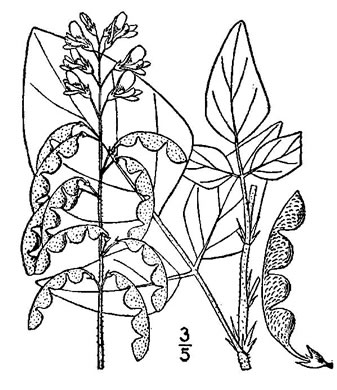Spermatophytes (seed plants): Angiosperms (flowering plants): Eudicots: Core Eudicots: Rosids: Fabids: Fabales
WEAKLEY'S FLORA OF THE SOUTHEASTERN US (4/24/22):
Desmodium floridanum
FAMILY
Fabaceae
Go to FSUS key
Dig deeper at SERNEC, a consortium of southeastern herbaria.
SYNONYMOUS WITH
PLANTS NATIONAL DATABASE:
Desmodium floridanum
FAMILY
Fabaceae
SYNONYMOUS WITH Native & naturalized Leguminosae (Fabaceae) of the US (Isely, 1998)
Desmodium floridanum
SYNONYMOUS WITH VASCULAR FLORA OF THE CAROLINAS (Radford, Ahles, & Bell, 1968) 098-26-020:
Desmodium floridanum FAMILY Fabaceae
INCLUDED WITHIN Manual of the Southeastern Flora (Small, 1933, 1938)
Meibomia rhombifolia
COMMON NAME:
Florida Tick-trefoil
To see larger pictures, click or hover over the thumbnails.
WEAKLEY'S FLORA OF THE SOUTHEASTERN US (4/24/22):
Desmodium floridanum
FAMILY
Fabaceae
SYNONYMOUS WITH
PLANTS NATIONAL DATABASE:
Desmodium floridanum
FAMILY
Fabaceae
SYNONYMOUS WITH
Native & naturalized Leguminosae (Fabaceae) of the US (Isely, 1998)
Desmodium floridanum
SYNONYMOUS WITH
VASCULAR FLORA OF THE CAROLINAS (Radford, Ahles, & Bell, 1968) 098-26-020:
Desmodium floridanum
FAMILY
Fabaceae
INCLUDED WITHIN
Manual of the Southeastern Flora (Small, 1933, 1938)
Meibomia rhombifolia
If a search such as "Carex leptalea var. leptalea" doesn't deliver the results you want, try "Carex leptalea".
Or, to minimize chances of a misspelling, try just "Carex le".
Less is more: If "pencil flower" doesn't deliver the results you want, try "pencil".


